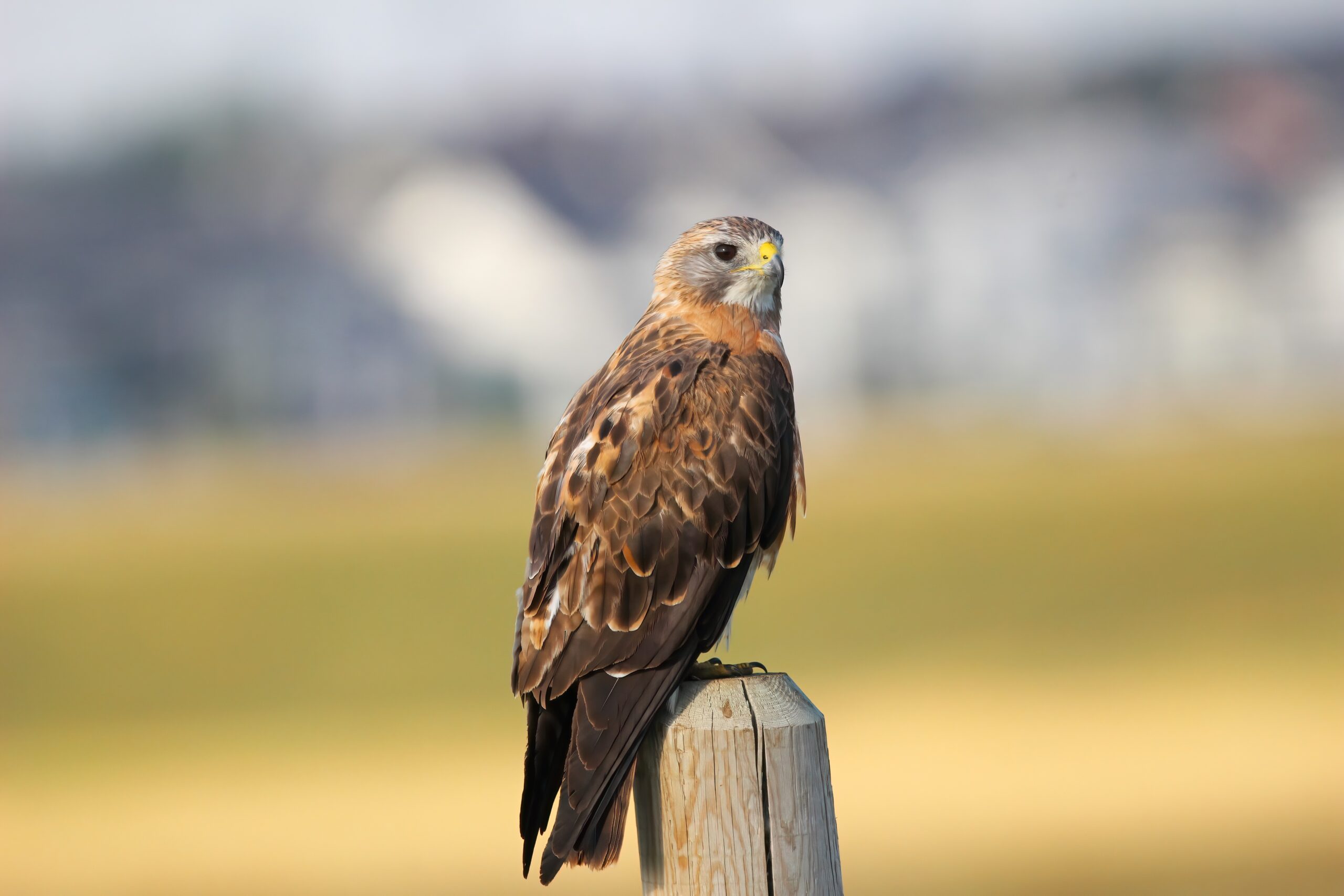During the last half of August, Elaine and I scour each power pole, each light pole, every fence post and the naked branches of dying aspen trees, looking for Red-tailed and Swainson’s Hawks. It’s late summer and the juveniles of both species lead to numerous sightings. While I drive “Rusty Red”, Elaine is counting hawks. If the road is traffic free, we stop, lower a window or two, poke a camera lens into the opening and capture the image of the hawk.
Named after British naturalist, William Swainson, the Swainson’s Hawk, nicknamed the grasshopper hawk for its voracious delight in eating grasshoppers, calls the western grasslands and prairie landscapes home. In late August, these hawks form kettles or social groups that can be seen soaring high above fields or perched seemingly on every second utility pole or fence post.
Although grasshoppers are no doubt delectable, the Swainson’s Hawk steps up its diet during breeding season to consume small mammals. Woe to the young gopher that stands too long in a field, as it’s likely to end up in the clutches of this hawk to be eviscerated and swallowed on a fence post perch. Ground squirrels, mice, voles, rabbits and even Burrowing Owls are table fare for the Swainson’s Hawk. Although we imagine that hawks soar high above searching fields for sustenance, these hawks are apt to forage on foot, chasing both insects and mammals, while having their wings outstretched.
The beauty of Swainson’s Hawks lies in part, in their variable color patterns. Most are light-bellied birds topped with a dark or reddish-brown chest. Upper parts are light brown or grey. As we often see hawks soaring high above, knowing the color pattern on the under-wings is helpful. White under-feathers lined with the almost black primary flight feathers help the birder spot this hawk. Swainson’s also have two “morphs”, one being the “light morph” where the under-wing feathers are lighter or white in hue. The second morph is the “dark morph”, where the same feathers are a red or Rufus color and the hawk is generally darker in color. Distinguishing male from female is difficult, but observing the head color is helpful. Males tend to have grey heads while females tend to have brown feather noggins.
Once the young are raised on our prairies, these hawks gather in the thousands, ready to head to Argentina for the winter, making it the raptor with the second longest migration at a general one-way distance of 11,400 kilometres. These lengthy migration can take up to two months. Locally, Swainson’s Hawks can be found nesting near McElroy Slough, east of Conrich or along the back roads near Dalmead Lake.. “Rusty Red” seems to know to drive north on the back roads heading east of Airdrie to ensure hawk sightings. Take a moment to look to the skies and hopefully the sight of the soaring Swainson’s Hawk, sets your soul free and fills your heart with joy.







